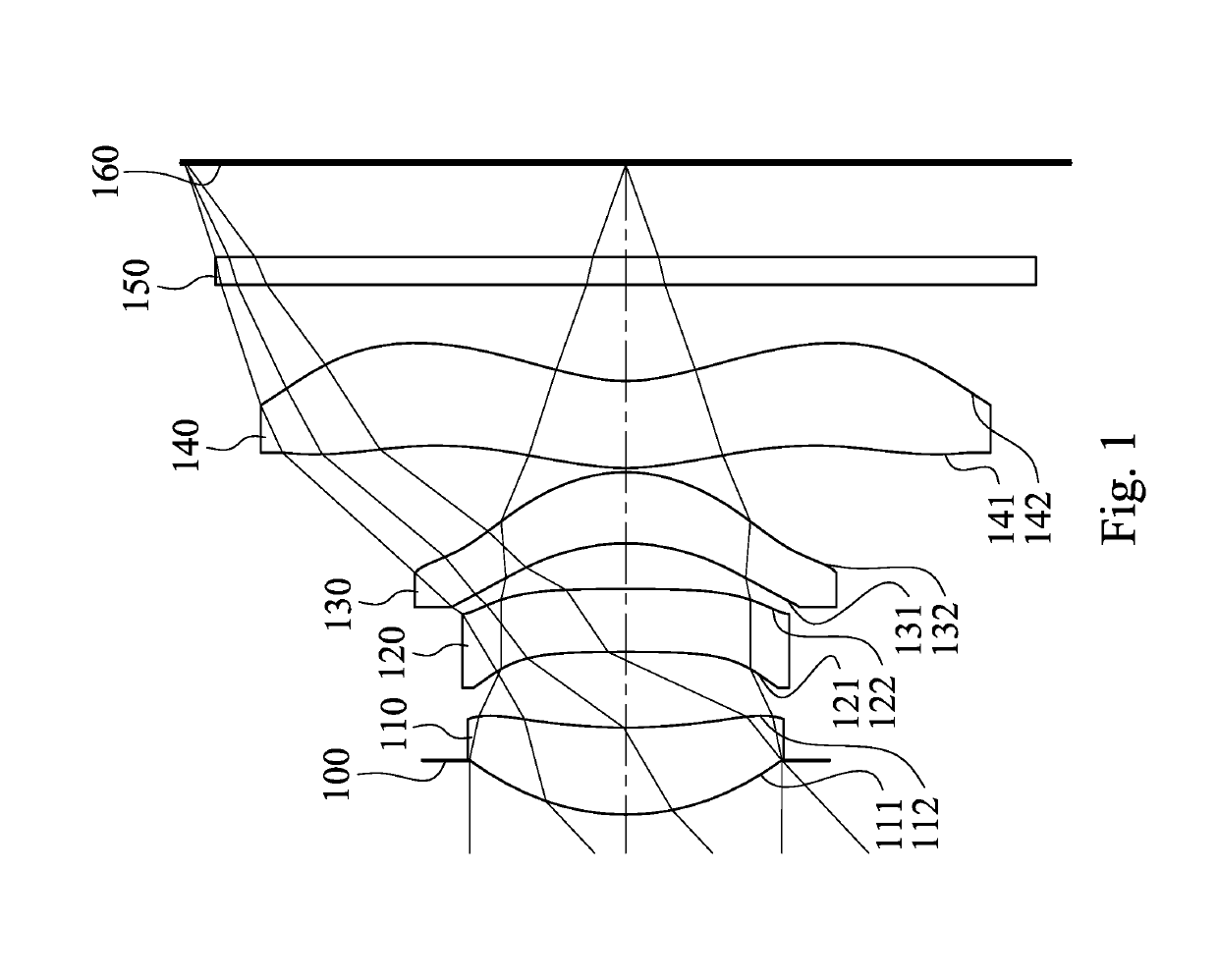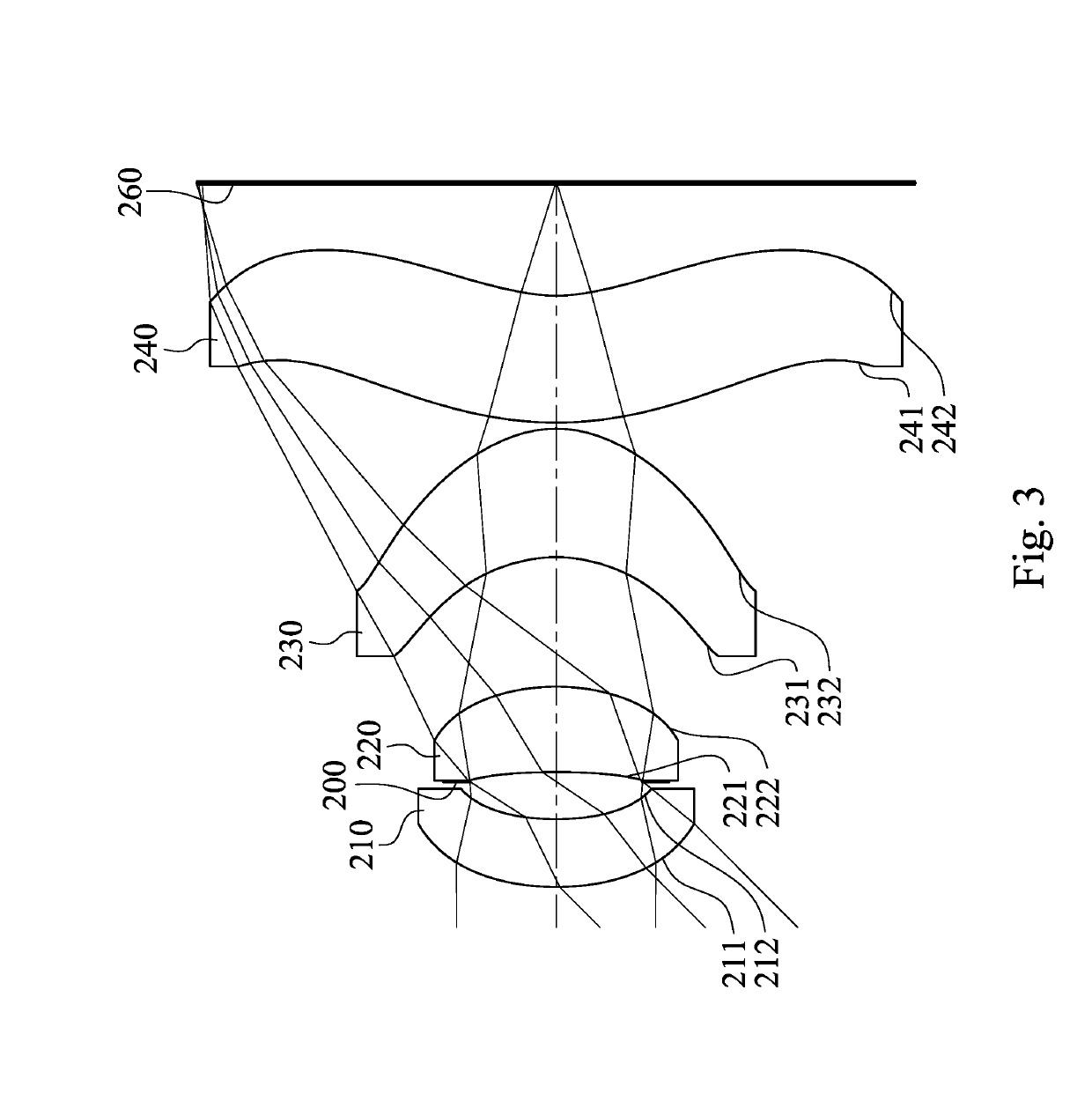Electronic device
a technology of electronic devices and components, applied in the field of electronic devices, can solve the problems of limiting the restoration of calculation results, information gaps, and difficulty in achieving the balance between the two conventional technologies
- Summary
- Abstract
- Description
- Claims
- Application Information
AI Technical Summary
Benefits of technology
Problems solved by technology
Method used
Image
Examples
1st embodiment
[0090]FIG. 1 is a schematic view of an electronic device according to the 1st embodiment of the present disclosure. FIG. 2 shows spherical aberration curves, astigmatic field curves and a distortion curve of the electronic device according to the 1st embodiment. In FIG. 1, the electronic device includes an optical lens assembly (its reference numeral is omitted), wherein the optical lens assembly includes, in order from an outside to an inside, an aperture stop 100, a first lens element 110, a second lens element 120, a third lens element 130, a fourth lens element 140, a filter 150 and an inside conjugation surface 160. The optical lens assembly includes four lens elements (110, 120, 130 and 140) without additional one or more lens elements inserted between the first lens element 110 and the fourth lens element 140.
[0091]The first lens element 110 with positive refractive power has an outside surface 111 being convex in a paraxial region thereof and an inside surface 112 being conc...
2nd embodiment
[0117]FIG. 3 is a schematic view of an electronic device according to the 2nd embodiment of the present disclosure. FIG. 4 shows spherical aberration curves, astigmatic field curves and a distortion curve of the electronic device according to the 2nd embodiment. In FIG. 3, the electronic device includes an optical lens assembly (its reference numeral is omitted), wherein the optical lens assembly includes, in order from an outside to an inside, a first lens element 210, an aperture stop 200, a second lens element 220, a third lens element 230, a fourth lens element 240 and an inside conjugation surface 260. The optical lens assembly includes four lens elements (210, 220, 230 and 240) without additional one or more lens elements inserted between the first lens element 210 and the fourth lens element 240.
[0118]The first lens element 210 with positive refractive power has an outside surface 211 being convex in a paraxial region thereof and an inside surface 212 being concave in a parax...
3rd embodiment
[0125]FIG. 5 is a schematic view of an electronic device according to the 3rd embodiment of the present disclosure. FIG. 6 shows spherical aberration curves, astigmatic field curves and a distortion curve of the electronic device according to the 3rd embodiment. In FIG. 5, the electronic device includes an optical lens assembly (its reference numeral is omitted), wherein the optical lens assembly includes, in order from an outside to an inside, a first lens element 310, an aperture stop 300, a second lens element 320, a third lens element 330, a fourth lens element 340 and an inside conjugation surface 360. The optical lens assembly includes four lens elements (310, 320, 330 and 340) without additional one or more lens elements inserted between the first lens element 310 and the fourth lens element 340.
[0126]The first lens element 310 with positive refractive power has an outside surface 311 being convex in a paraxial region thereof and an inside surface 312 being concave in a parax...
PUM
 Login to View More
Login to View More Abstract
Description
Claims
Application Information
 Login to View More
Login to View More - R&D
- Intellectual Property
- Life Sciences
- Materials
- Tech Scout
- Unparalleled Data Quality
- Higher Quality Content
- 60% Fewer Hallucinations
Browse by: Latest US Patents, China's latest patents, Technical Efficacy Thesaurus, Application Domain, Technology Topic, Popular Technical Reports.
© 2025 PatSnap. All rights reserved.Legal|Privacy policy|Modern Slavery Act Transparency Statement|Sitemap|About US| Contact US: help@patsnap.com



